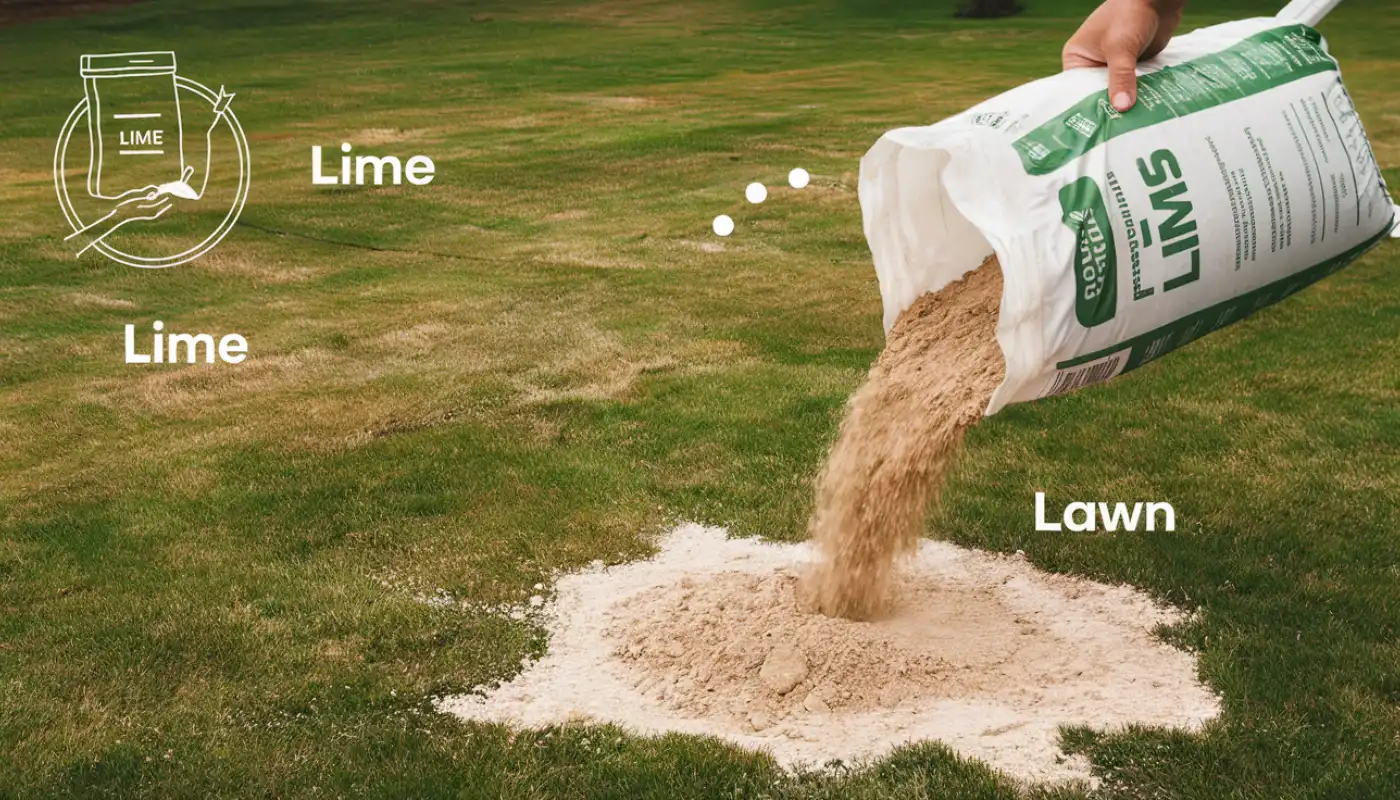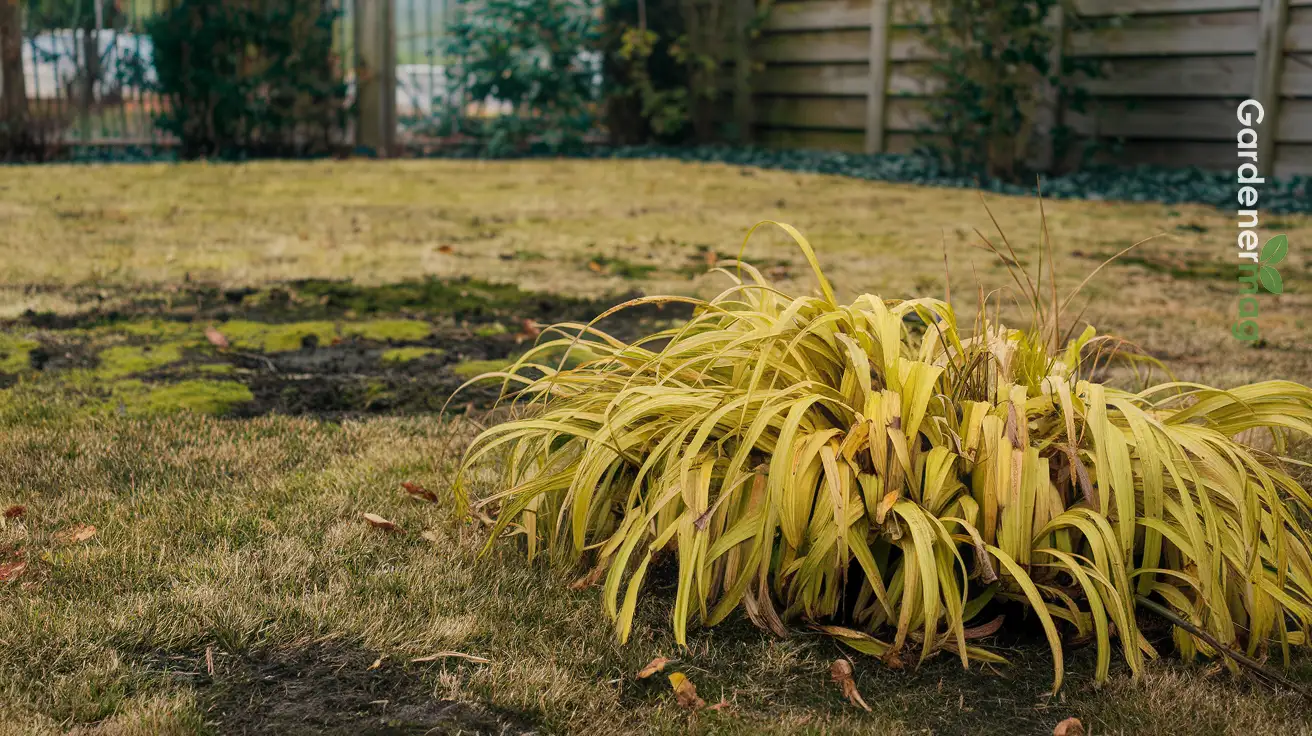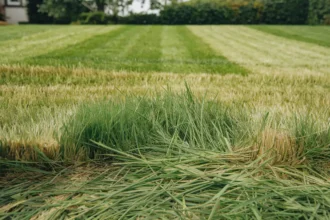Lawn grasses thrive when the soil pH is between 5.8 to 7.0. A pH level lower than this is detrimental to your grasses. But how would you tell if your lawn needs lime?
In this post, we will discuss the signs that will let you know when to apply lime to your lawn. Read on.
Why Add Lime To Your Lawn?
In general, grasses thrive in slightly acidic soil. However, due to excessive use of fertilizers or water runoff, the lawn soil may become very acidic. Once the pH levels drop below 5, the grasses will be negatively affected.
For instance, the grasses will not be able to absorb nutrients from the soil effectively or stop responding to fertilization. Hence, the grasses may begin to grow weakly, turn yellow, or show signs of dying.
In such a case, chances are that your lawn needs lime to lower or correct the level of acidity.
More so, the lime application helps your lawn to grow properly, stay green, and withstand weeds, pests, and disease. For even more signs your lawn needs lime, keep reading.
How To Tell If Your Lawn Needs Lime?

Here is how to tell if your yard needs lime:
When your grass is turning yellow
As stated above, grasses need a pH level between 5.8 and 7.0 to thrive. However, when the lawn pH becomes too acidic, it can affect the health of your grass, as well as its color.
Hence, if your grass is turning yellow, and fertilization seems ineffective, it may need lime.
Mind you, some grasses, like the tall fescue, prefer a soil type that is slightly more acidic, while others, like the St. Augustine grass, like soil that is slightly more alkaline.
Prevalence of thatch, weeds, and mosses
Too much acidity impedes nutrient absorption, and when nutrients are not readily available to your grasses, they can start to die off.
Dead grasses create spaces for thatch, weeds, and mosses to swoop in and cover any bare spots. Besides, many weeds thrive in highly acidic soil. For instance, Dandelions are one of the weeds that love high acidity.
Fertilizers become ineffective on the lawn
For most lawn owners, fertilizer is the first option once they notice that their lawn is not growing properly. However, if you notice that your lawn is nonresponsive and still lacking after a fertilizer treatment, try lime treatment instead.
High acidic soil will not allow nutrients from the fertilizer to penetrate the grass roots.
Also, further application of fertilizers in such a condition can cause more damage, such as an overabundance of nitrogen, which can further increase soil acidity.
You need to apply lime to the soil to increase the soil pH before fertilizer can be effective.
Poor growth
If your grass is growing patchily or weakly, chances are that your lawn needs liming.
Listed above are signs that you need to add lime to your lawn. You may also need to add lime to the lawn during any of the following:
After a lot of rainfall or a season of drought
Too much water can also lower your soil’s pH. This is because excess water can lead to runoff, which can strip the soil of its essential nutrients like potassium, calcium, and magnesium.
Adding lime replenishes the soil with those lost nutrients and also enables the soil to withstand times of excess drought and heat.
If your lawn has sandy soil or clay Soil
Sandy and clayey soil types are naturally acidic. You would need to apply lime to increase their pH and lower their acidity. This will make the soils more conducive for lawn growth.
More so, both soil types, especially sandy soil, have difficulties retaining water and essential nutrients. However, adding lime can help improve the soils’ ability to retain both water and nutrients.
Also, lime makes clay soil become looser and easier to break up.
Low pH reading
Conducting a soil pH test is the most accurate way to tell if your soil needs lime. This test accurately measures your soil’s pH, including its texture and nutrient levels.
It is important to conduct a soil test every three years. The results will help you know what your soil is lacking and what amendments to incorporate.
You can easily carry out a DIY soil test when you purchase the necessary kits or send a soil sample to a specialized lab for more accurate testing.
How To Apply A Lime To Your Lawn?

Once a soil test reveals a low pH or you notice any of the signs above, it’s time to apply lime to your lawn.
But before that, try as much as possible to mow and aerate your lawn. Doing this will ensure that the soil amendments get deep into the soil and produce the desired results.
Get pelletized lime for lawns; it is more efficient than powder limestone, which is more likely to be blown away.
Pellet lime will stay put on the soil. Using a rotary spreader or any suitable tool, cover your lawn with a layer of lime. Avoid using your bare hands because lime can irritate your skin.
Generally, a 40lb bag of lime will cover about 1,000sq. Ft. of lawn. This should help you plan accordingly based on your lawn size.
Don’t apply lime to a wet lawn. A weather forecast can help you plan your lime application effectively. Nevertheless, the best time to lime lawns is early spring.
Conclusion
The soil pH, which is the measure of how acidic or alkaline your soil is, is very important to grass growth. It is important because it determines how the soil absorbs nutrients. The more acidic the soil is, the less nutrients it will absorb.
Luckily, there are common signs to tell if your lawn needs lime, which have been explained above. If you notice any of these signs on your lawn, the best solution is to apply lime.
For the best result, choose pellet lime, apply it in early spring, and avoid applying it on a wet lawn. Water the lawn after lime application to aid quick penetration into the soil.
Although it may take a few weeks to months, you will definitely see the positive difference. Hence, be patient and allow the lime to do the magic.
Frequently Asked Questions (FAQs)
Yes, lime application can be too much. That is why you need to apply the right amount of lime sufficient to raise your soil pH. Applying too much lime would make your soil too alkaline, and this can also impede the proper flow of water and nutrients, causing your lawn to die off.
Yes, you should avoid liming your lawn:
When a soil test result reveals that your lawn already has a balanced pH.
During the period of drought or high heat.
When the grasses are covered with frost.
When the grasses are visibly wilted
It’s not magic or an overnight miracle; the effect may take a few weeks to show in your soil. Just be patient. However, how long it will take depends on several factors, such as the soil’s initial pH level, the form of lime you use (powder or pellets), and the soil’s moisture content.






